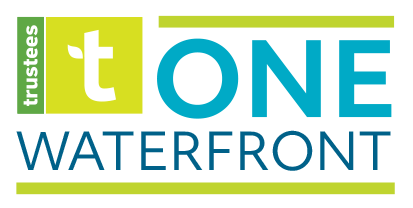Thousands of Boston properties facing flood risks, rising financial impacts: First Street Foundation report
More than 19,000 properties in Boston are at risk of experiencing flooding events, according to a report and interactive flood mapping tool from research and technology non-profit First Street Foundation.
Within 30 years that number is forecast to nearly double due to accelerating climate change impacts, the non-profit finds, noting in its report that nearly 4.3 million homes nationwide face “substantial” flood risks.
“Because a great deal of flood risks exists outside of Federal Emergency Management Agency’s (FEMA) designated Special Flood Hazard Areas (SFHA), this research reveals a vastly expanded mapping of economic risk associated with flood risk,” the non-profit explains.
According to the report, Boston is facing the greatest financial impacts from residential flood damage of any Massachusetts municipality, which it estimates will exceed $35 million this year. Its interactive mapping tool online allows users to search by address or region, illustrating risk level by a “flood factor” ranging from “minimal” to “extreme,” with areas of more severe impacts including portions of East Boston, Seaport, and Back Bay.
“These findings reinforce our State of the Coast report,” says Tom O’Shea Trustees Director of Coast and Natural Resources. “In Gloucester alone, over 1,000 properties are projected to flood from a 10-year storm in 2050. Climate change-driven flooding impacts are already happening and will only accelerate in the next 30 years. Action is urgent and means restoring natural shorelines and flood plains, adapting our infrastructure, or even retreating from areas of severe flood risk.”
Alongside First Street’s interactive flood risk maps are examples of known adaptation measures, including the utilization of green infrastructure such as open spaces, marshes and wetlands, and natural barriers—solutions it identifies as “cost-effective and sustainable” methods to adapt to storm surge and flooding events. These types of natural buffers to the impacts of climate change are a key component of the Boston Waterfront Initiative vision, as methods that can help to protect homes, businesses and infrastructure from the accelerating impacts of climate change, which are already affecting waterfront areas.
“As we work with the community and landscape architect Michael Van Valkenburgh Associates, Inc. to design the landscape of Piers Park III in East Boston, green elements that can help to buffer flooding and storm surge are at the forefront of our thinking,” says Nick Black, Managing Director of the Boston Waterfront Initiative. “In addition to being a welcoming space for all, it’s important that this waterfront park play a role in helping to protect the neighborhoods behind it during a storm or high tide, and be able to ‘bounce back’ from that kind of disruption.”
Elevated parks, stormwater gardens, and berms are some of the adaptation methods also envisioned by Climate Ready East Boston to help mitigate flooding impacts in a part of the City that has been identified as one of the most vulnerable neighborhoods to rising sea levels.
The first design concepts for Piers Park III are being developed with this vulnerability in mind, and by incorporating community feedback from public meetings, and an online survey. They will be shared publicly at the next Piers Park III public design meetings, taking place on March 29 (in English) and March 30 (in Spanish). Feedback during these two sessions and continued input on the survey will help to inform the next drafts of the design, with community meetings and other outreach continuing as important touchpoints throughout the project.
“The First Street report and the State of the Coast report both show some significant impacts expected to affect our homes and businesses in the near and long-term from the accelerating impacts of climate change,” adds Black. “But what they also show is that we still have the time to intervene and adapt to reduce our risk and become more resilient. It’s important that we act now, and in partnership with residents, community leaders, and businesses who call these places home. Ultimately, we’re working to protect a future that belongs not just to some of us, but to all of us.”
##
Explore the findings of the First Street Foundation report by clicking here
Explore the findings of the State of the Coast report here: onthecoast.thetrustees.org/about
Learn more about Piers Park III: onewaterfront.thetrustees.org/pp3
Register for the upcoming Piers Park III public meetings: onewaterfront.thetrustees.org/community-events
[Thumbnail image courtesy Tyler Springhetti/Unsplash]
